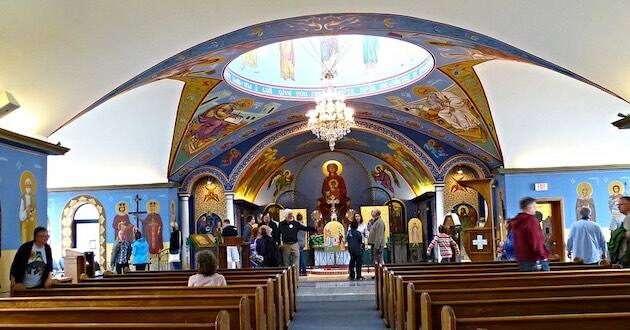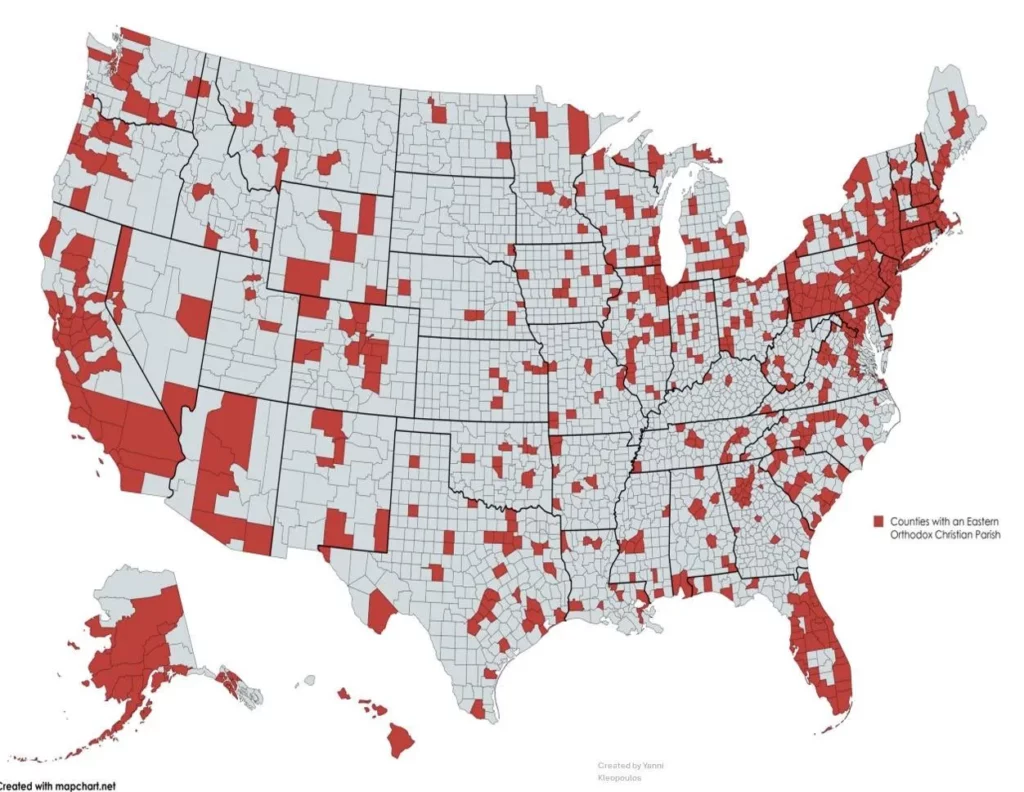The pandemic was especially challenging for Orthodox churches, whose liturgy involves processions, incense, kissing icons and crosses, and receiving Communion from a shared spoon and chalice. A new study reveals that Orthodox churches overall were reluctant to embrace virtual worship compared to all religious congregations. The decision seems to be paying off.
Having fewer online options likely contributed to the significant drop in Orthodox church participation in the middle of the pandemic in 2021, but compared to other U.S. congregations that are on average 8 percent below pre-COVID-19 attendance, Orthodox churches had recovered in-person attendance on average by spring 2023.
The Orthodox tendency to express their religious freedom and not partake in lockdowns during the pandemic has produced a “mixed bag,” according to the study by the Hartford Institute for Religion Research and Alexei Krindatch, national coordinator of the U.S. Census of Orthodox Christian Churches. Orthodox churches in the United States are more likely than other religious congregations to have gained members during the pandemic, as opposed to protestant and even Catholic churches, while struggling with declines in church life participation and volunteering, Religion News reports.
Using survey data from 2020 through 2023, the study found 44 percent of Orthodox churches remained open during the pandemic, compared to just 12 percent of all U.S. congregations. Only 31 percent of Orthodox priests publicly encouraged parishioners to get vaccinated, compared to 62 percent of all clergy. “They were trying to avoid conflicts,” Krindatch said.
There is no single Orthodox Church in the United States. Instead, several jurisdictions — the largest are the Greek Orthodox Archdiocese, the Orthodox Church in America and the Antiochian Orthodox Archdiocese — are administered independently of one another and exist side by side, sharing the same teachings and in full communion with one another.
Many Orthodox parishes combine several immigrant groups and their descendants, from Russians and Ukrainians to Arabs and Greeks, as well as converts from other faiths and denominations. Bishops provided pandemic guidance to the priests serving them, such as whether to require masking or not, often across a swath of states that clashed on masking and lockdown mandates. Priests then chose whether and how to follow or adapt that guidance to their specific circumstances, sometimes casting doubt on the bishop’s authority.
Most Protestants and many Catholics do not fully understand salvation or other doctrine of the Orthodox church. According to the Orthodox Church Network, spiritual “freedom consists of liberation from this thrice-cursed trinity of sin, death and the devil. It was precisely because of this that Our Lord Jesus Christ became the only Saviour of the human race, because, through His Resurrection from the dead, He saved us from sin. The Resurrection is the victory over death, and hence over sin, and over the devil.”
–Alan Goforth | Metro Voice









